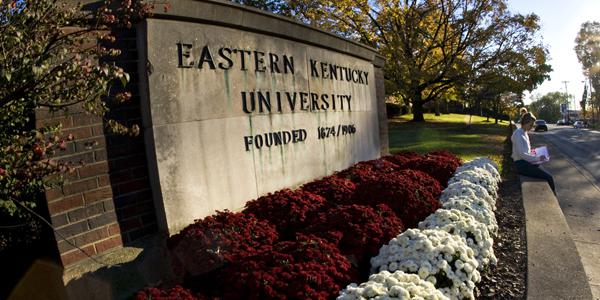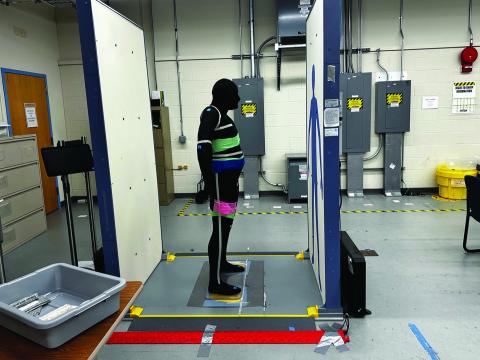Institutions of Higher Learning and Active Shooter Preparedness
The FBI examined 160 active shooter/mass murder incidents between 2000 and 2013 and found that 70 percent of these attacks occurred in schools or businesses. They also reported that these incidents are on the rise. As active shooter events have continued throughout the nation, various tactics have emerged, including the attack at Ohio State University where a student utilized a vehicle as a weapon and then assaulted victims with a knife. This same method of attack has occurred in other locations. Unfortunately, we can also predict that the use of explosives in such an attack is likely to happen in the future.
Although officials declare that protecting our nation’s schools and their campus population is a priority, many institutions of higher learning remain grossly unprepared and are even equipped with some counteracting security measures meant to protect against invasions of privacy or the creation of a prisonlike appearance. The goal of all educational institutions should be to establish an enhanced level of security while maintaining a positive learning environment. The question is: how can schools protect themselves from acts of violence? There is no single solution; the answer is best found in a holistic, multifaceted approach that utilizes layers of security supported by effective procedures and situational awareness, and is accompanied by a state of individual preparedness.
The ultimate goal of security is to prevent tragedy by identifying and interrupting attackers before they strike. This requires the receipt of information about the potential threats from the community. Trust must be developed between officials and individual communities before information can be shared. This trust is best achieved by fostering effective ongoing relationships between officials and the community at large, as well as the micro communities within them.
Deterrence is another desirable outcome achieved by making a location appear so secure from attack that a “successful” act of violence seems unlikely or at least significantly less likely than other similar and more vulnerable locations. Even though no single solution exists, approaches such as the use of well-trained and armed campus law enforcement have been beneficial in active shooter events; however, the use of security personal is only part of the solution. Successful ongoing protection requires the integration of additional measures.
Effective security requires a layered approach incorporating multiple physical and physiological impediments aiding in the identification, deterrence and delay of access by individuals, vehicles or other threats. Although some physical locations impact what can and cannot be incorporated into protective measures, beneficial impediments can include lights, fences, walls, protective bollards, large decorative planters and natural barriers such as ditches, trees, bodies of water and even dense vegetation. The use of technology to identify threats, such as closed-circuit television with threat detection software, shot sensors and automated notification systems, intrusion resistant doors and bullet resistant glass/panels can additionally deter violence.
To develop successful strategies, officials must examine the location, surrounding environment and potential threats. For example, if it is necessary to prevent vehicles from gaining access to an area, the use of trees, ditches, walls, bollards and large planters could be an effective and unobtrusive tactic. That said, shortfalls in funding may make these measures cost prohibitive. If this is the case, areas with dense populations should be a priority. On the other hand, if the goal is to keep potential attackers out of a classroom, the simplest and most effective means is closing and locking the classroom door during instructional periods. Yet many educators remain reluctant to incorporate this tactic stating that it is too disruptive to open doors for late students. Such reasons are not acceptable. Professors can use assistants or able-bodied students to open doors for latecomers. If the implementation of these procedures were to save just one life, they would be worthwhile. Imagine if all schools and institutions of higher learning implemented a policy of locking and closing classroom doors during instructional periods. The reduction in loss of life in an active-shooter incident would be significant.
In reality, everyone has a role in enhancing their security by maintaining situational awareness of their surroundings and through the development of personal response plans (or mental rehearsals) which outline primary and alternate plans of action in the event of an active shooter or critical incident. Plans should include options like immediate and rapid evacuation of the threat area, which involves the identification of primary and secondary routes; remaining out of sight and preferably in a secure area that provides cover capable of stopping gunfire; and vehicle access in areas subject to vehicular assault. Another component is consideration of the aggressive use of force against the shooter, including the use of improvised weapons. For example, groups sheltered within a room can develop response plans to protect themselves if an assailant gains entry, such as one individual grabbing the rifle when the attacker enters the room while another individual simultaneously tackles the aggressor and a third restrains the aggressor’s arms.
Clearly the involvement and participation of faculty, staff and students is key to success as well as the incorporation of security engineering and protective design, and the development and implementation of effective plans, policies and procedures. Training is another key component which should include initial and continuing instruction of personnel with the incorporation of drills and scenarios, reinforcing and engraining the concepts introduced, thereby improving individuals’ ability to perform tasks while under stress when cognitive functioning is significantly diminished. Success is also dependent upon the establishment of partnerships and the development of coordinated response efforts with local law enforcement and other first responders. Each of these actions is not possible without the support of administration and key officials, making administrative buy in essential to success.
The process may sound complicated, but in reality it is a logical progression for any security professional. The results will save lives in the event of an active shooter situation. Local law enforcement can be an excellent resource for the development of security measures, however it is the responsibility of academic institutions to provide a safe environment conducive to learning. It is also critical for students, staff and faculty to individually prepare for such events and to challenge institutions that are not properly prepared. It may be your life that depends on it.
Dr. Bill Sullivan is a professor of safety, security and emergency management at Eastern Kentucky University. He obtained his B.S. in Police Administration in 1984, M.S. in Safety Security and Emergency Management with a certificate of focus in Homeland Security in 2007 and his Doctorate in Leadership and Policy Studies with a research focus on School Safety and Security from Eastern Kentucky University in 2013.





Comments